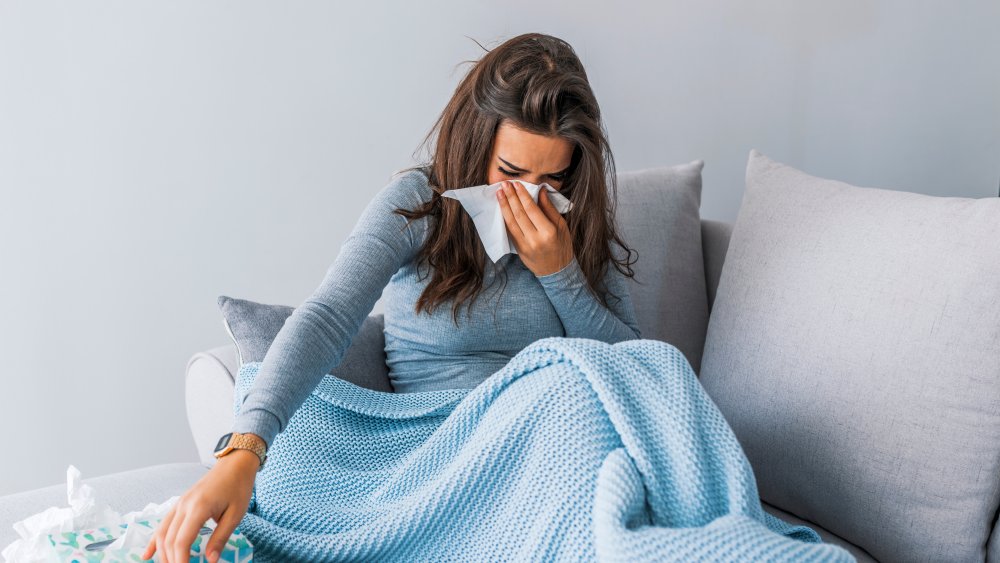Why A Flu Shot Is Even More Important This Year
It can come with a fever, cough, headache, sore throat, and muscle and joint pain. It also can wreak havoc on your respiratory tract, triggering difficulties breathing and complications like bronchitis or pneumonia. And we're not talking about COVID-19 — we're talking about the seasonal flu.
When the coronavirus pandemic first broke out in late March, most of the country had already pushed past the peak of the typical flu season. And as Health points out, the two diseases literally passed each other like viral ships in the night. But this winter, we may not be so lucky and could end up facing not one, but two epidemics. That's why it's important to get a flu shot between late September and early October. "The worst-case scenario is both [viruses] are spreading fast and causing severe disease, complicating diagnoses and presenting a double burden on the health care system," said Harvard University epidemiologist Marc Lipsitch (via Scientific American). And his peers agreed. "The concern that we might have a double whammy of flu and coronavirus is legitimate," noted Jeffrey Shaman, an epidemiologist at Columbia University.
A flu and coronavirus co-infection is possible without a flu shot
Facing a double epidemic is just one problem. Because the pathogens use different ways to get access to our bodies, there is a chance you could suffer from both COVID-19 and the flu. While some doctors have told Cleveland Clinic that they didn't see any cases of co-infection, Waleed Javaid, the director of infection prevention and control at Mount Sinai Downtown, told Health: "We have seen people who had both COVID and influenza — and were critically ill." He explained that getting the flu could also increase your risk of picking up COVID. That's because you might need to see a doctor, go to the pharmacy, or even be hospitalized. All three circumstances expose you to a higher chance of picking up the disease.
What's more, Greg Poland, professor of medicine and infectious diseases at the Mayo Clinic, suggested to Cleveland Clinic that a co-infection would affect a sick person in different ways. "How they actually infect human cells are different. If one were infected with both and had an upper or lower respiratory tract infection, that is a double whammy. One of them by themselves is a difficult and sometimes critical situation. Both of them at the same time raises the pathology and the critical nature of the illness."
The best way to avoid this potential danger? Poland and other experts recommend getting your flu shot.

